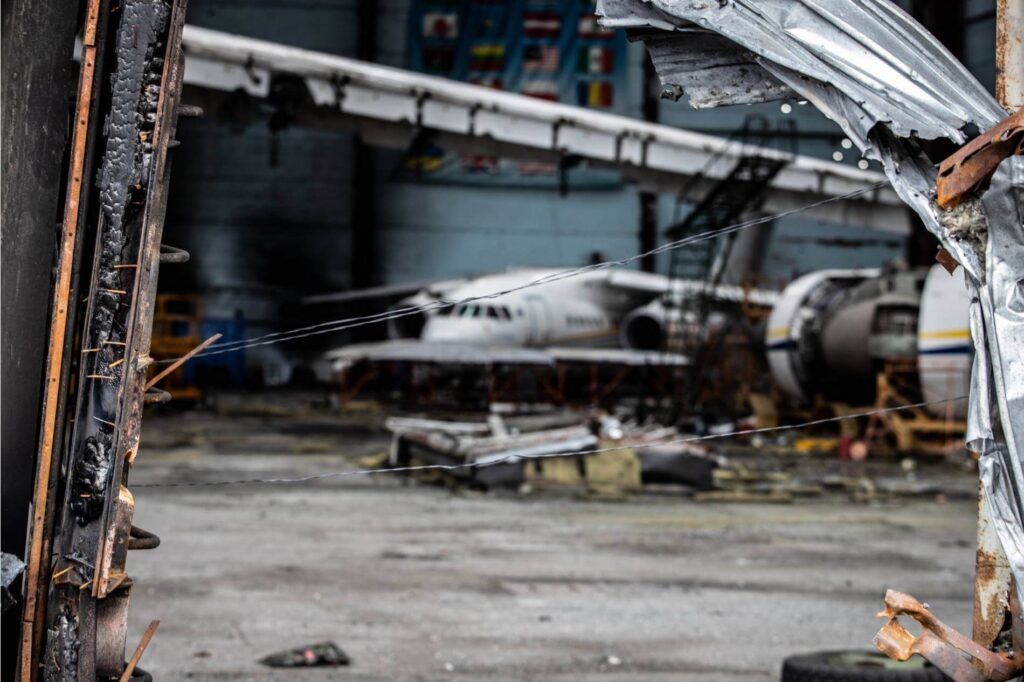Two important events occur on August 24, 2022: the Ukrainian Independence Day and the six-month anniversary of the start of Russia’s full-scale invasion of Ukraine.
One of the major impacts of this invasion, the largest European conflict since the Second World War, was felt by civil aviation across Central and Eastern Europe.
Ukrainian aviation bore the lion’s share of that devastation. As missiles began to fall on the country’s airports during the early hours of February 24, 2022, and the first airspace closures were announced, it soon became clear that the skies above the country were going to change.
But how have they changed during the past six months? Let’s take a look.
Empty skies
It is important to remember that the war was not unexpected. Warnings of an impending invasion prompted many airlines to reduce or stop their flights to Ukraine as early as mid-February.
Ukrainian airlines were among the few to continue operations, in addition to low-cost carriers such as Ryanair and Wizz Air, as well as Turkish Airlines, Qatar Airways and Air Baltic.
So, the skies above Ukraine were already half-empty, even before February 24.
But on February 24 all flights ceased as early that morning Ukraine issued a Notice to Air Missions (NOTAM) prohibiting the entry of its space across all the country’s air identification zones.
Moldova also closed its airspace because the entire country is situated in close proximity to Ukraine. Russia prohibited entry to parts of its airspace close to the border with Ukraine, as did Belarus.
Little has changed since then, save for Moldova opening a part of its airspace to allow for flights to Chisinau International Airport (KIV) in August 2022.
So, for half-a-year now, only military aircraft belonging to Russian and Ukrainian air forces have been seen in Ukrainian airspace, conducting transport flights, attacks and sometimes even engaging in dogfights.
Airlines without a home
The gradual rise in tensions was, in its own way, beneficial to Ukrainian airlines. Some of the aircraft were stationed abroad before the beginning of the invasion and were spared from the attacks and airspace closures.
For example, Antonov Airlines, Ukraine’s iconic freight carrier, evacuated some of its aircraft and continues to fly them, conducting charter flights and supporting Ukraine’s war effort. Leipzig (LEJ), where the airline already had an established base, became the main hub for surviving Antonov An-124s.
Ukraine International Airlines (UIA), the country’s flag carrier, also saw a part of its fleet spared. More than a dozen of its narrow-body Boeing 737s were scattered across Europe, but the remainder of its fleet was trapped in Ukraine.
While unable to conduct flights from their hub in Kyiv Boryspil (KBP), in late April the company announced an offer to lease its 737s. The aircraft and their crews would be available for humanitarian flights, charter operations or longer wet leasing arrangements. Several such deals have been conducted since then, with, for example, Air Baltic supplementing its fleet with UIA’s airplanes.
This was the route chosen by at least one other Ukrainian airline. Low-cost carrier SkyUp, initially preoccupied with evacuation flights from Moldova, began dry leasing its planes and even expanded its fleet thanks to a pre-war agreement.
At least one other Ukrainian airline has managed to resume flights. Meridian, a small cargo charter airline, attracted a lot of attention in July, when its An-12 crashed in Greece. The aircraft had allegedly been carrying weapons.
However, most of the country’s smaller carriers, even those that managed to evacuate some aircraft on time, did not restart operations and remain grounded across Europe. While retaining parts of their fleet outside Ukraine, Jonika Airlines, Motor Sich Airlines, and Windrose Airlines among others, remain inactive.
It is likely that the situation will remain this, at least until the war reaches a resolution.

